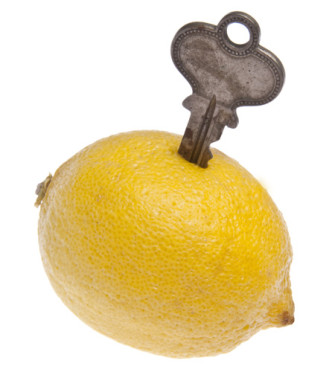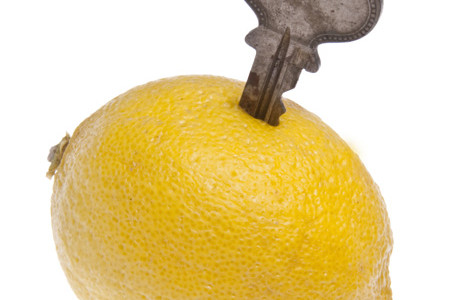Is Your Home a Lemon?
 There is no flawless house. Each home, even a new one, has some issues. The trick is in spotting the really big ones before you sign on the dotted line. People get emotionally attached to a house before they understand what the issues are with it.Subtle signs such as tiny insect holes or water behind walls will be next to impossible to detect amidst freshly painted walls, new siding and snazzy appliances. But you can look for several big, flashing cues to some of the worst problems.
There is no flawless house. Each home, even a new one, has some issues. The trick is in spotting the really big ones before you sign on the dotted line. People get emotionally attached to a house before they understand what the issues are with it.Subtle signs such as tiny insect holes or water behind walls will be next to impossible to detect amidst freshly painted walls, new siding and snazzy appliances. But you can look for several big, flashing cues to some of the worst problems.
When you go shopping for a home, wear old clothes and sturdy shoes. Bring along:
- A flashlight
- A carpenter’s level and a child’s marble
- Binoculars
Here’s what to look for:
Foundation Cracks
Foundations can crack because they’re poorly built or made of insufficient materials, or because the house is poorly engineered. You’re most likely to find foundation cracks in older homes. New homes have so much (foundation) rebar and structural reinforcing because of building codes that structural cracking is usually unheard of. That’s not the case everywhere, though, so check foundations on new homes, as well. Types of foundations include a basement, partial basement and concrete-enclosed crawl space under the house. Not every house has a foundation. Some homes are built on a concrete slab (called slab on grade) or are set on posts that are sunk into concrete footings (called post and pier).
- Walk around the outside of the house if you can, looking for cracks in the concrete, stone or brick foundation. (With some homes, shrubbery or a cement board skirting around the foundation make this impossible.)
- If there’s a basement, check the inner walls for evidence of leaks or seeping water, especially where walls meet the floor.
A few hairline vertical or stair-step cracks in concrete are not significant. Likewise, stair-step cracks in a brick or block foundation aren’t cause for alarm if they’re only in the mortar.
Sagging Roof
A home’s roof sags when it’s bearing too much weight, often from too many layers of shingles piled one on top of the other. Houses sometimes have layers of wood shingles on the bottom and two or three layers of asphalt composite shingles on top of that. That will make the roof sag. Damage from a crushing weight of snow also causes roofs to sag. The damage is compounded when it snows repeatedly. Sagging changes the roof’s pitch. Then new snow stays on longer, weighing the roof down more.
Sloping Floors
Sloping floors are not uncommon in older homes, especially turn-of-the-century houses. Don’t let a seller pass the problem on to you, because it’ll cost you when it’s your turn to sell. You think it’s not going to make a difference in the price of the house? Of course it will. A sloping floor may signal weakness in the home’s supporting structures. But that’s not always the case, Juneau says. Sometimes it’s just the result of an imperfect repair. In replacing floor joists, for example, the floor may not have been correctly re-leveled.
Problems with Doors and/or Windows
All houses settle a little. In a house that has twisted in its frame, however, doors won’t close properly and windows won’t operate well. The cause might be a cracked foundation or missing structural members.
Failed Siding
Siding provides protection from the elements, moisture and damage. Time-tested siding materials are wood, aluminum, vinyl, stone, brick and stucco. Be alert for wood composite siding installed before 1996. Later products do better though still need examination. Several types have failed in wet or humid climates because of faulty products, installation or maintenance. Some were the subject of class-action lawsuits though much of the settlement money has been exhausted. Don’t get stuck with the cost of replacing bad siding. Spot it before buying a home and get the seller to lower the price.
Mold or Water Stains on Ceilings/Walls
The cause of mold and rot is simple: Water got in where it shouldn’t have. The pros call it moisture penetration. The longer it’s there, the more damage it creates.
From MSN RealEstate

